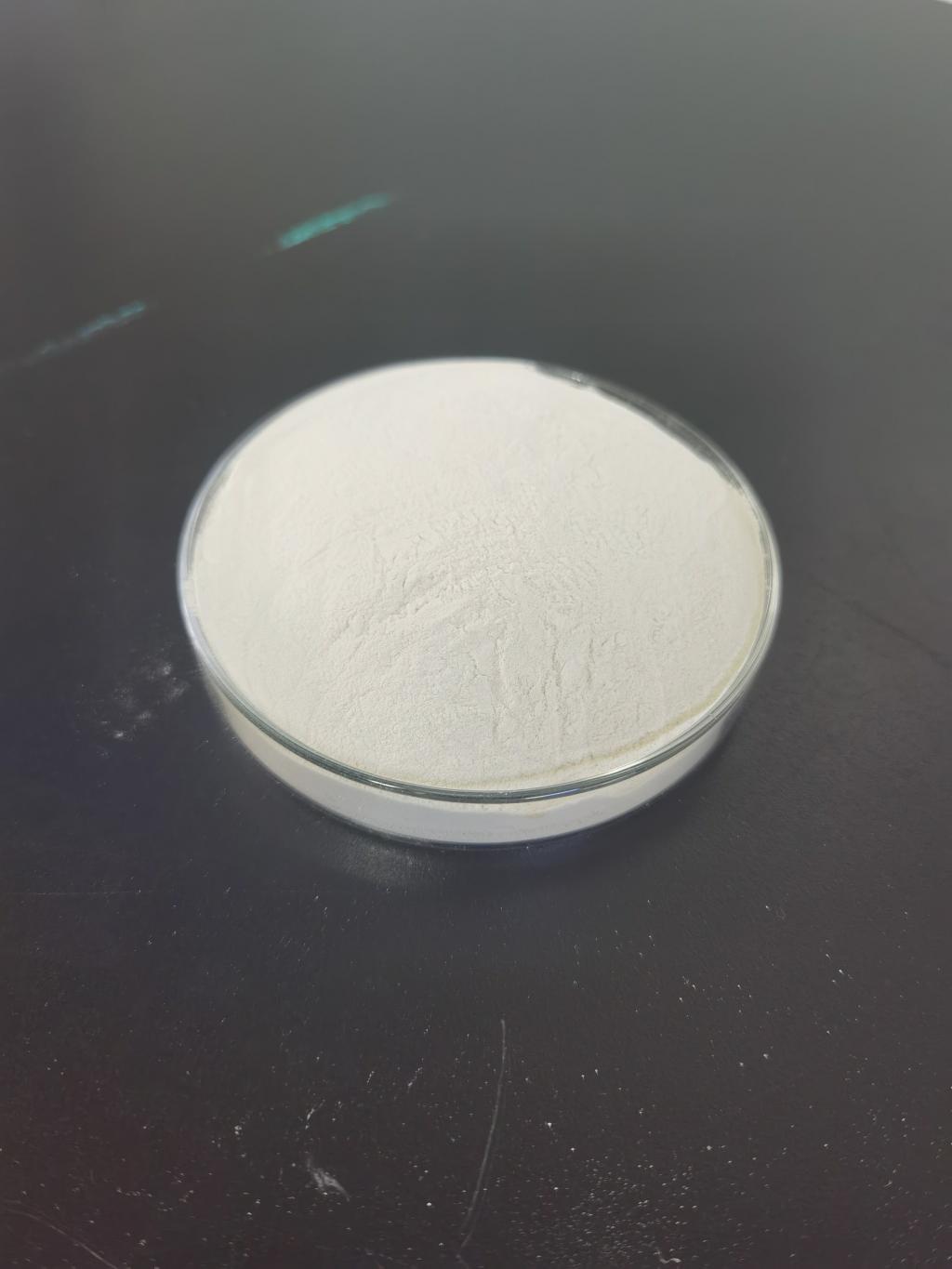
Nisin's efficacy against biofilms.
TIME:2024-05-17
Biofilms are complex microbial communities embedded in an extracellular matrix, adhering to surfaces such as medical devices, food processing equipment, and natural substrates. These structured communities exhibit increased resistance to antimicrobial agents and host defenses, posing challenges in various fields, including healthcare, agriculture, and industrial settings. Conventional antimicrobial agents often fail to eradicate biofilms completely, leading to recurrent infections, food spoilage, and equipment fouling. Nisin, a naturally occurring antimicrobial peptide, has garnered attention for its potential to combat biofilms due to its broad-spectrum activity and unique mode of action. This review provides a comprehensive overview of nisin's efficacy against biofilms formed by different microorganisms and its mechanisms of action, highlighting its potential applications in controlling biofilm-related issues across diverse environments.
Nisin's Antimicrobial Activity Against Biofilms:
Nisin exhibits potent antimicrobial activity against a wide range of microorganisms commonly associated with biofilm formation, including bacteria and fungi. Studies have demonstrated nisin's effectiveness in inhibiting biofilm formation, disrupting preformed biofilms, and eradicating biofilm-associated cells. Key findings include:
- Bacterial Biofilms: Nisin effectively inhibits the formation of biofilms by pathogenic bacteria such as Staphylococcus aureus, Escherichia coli, Pseudomonas aeruginosa, and Listeria monocytogenes. It disrupts biofilm architecture, reduces biomass, and enhances susceptibility to other antimicrobial agents.
- Fungal Biofilms: Nisin exhibits antifungal activity against biofilms formed by Candida albicans, Candida glabrata, and other clinically relevant yeast species. It disrupts fungal cell membranes, inhibits hyphal growth, and prevents biofilm development on both abiotic and biotic surfaces.
Mechanisms of Nisin's Anti-Biofilm Activity:
Nisin's anti-biofilm activity is attributed to its ability to target multiple cellular processes and disrupt biofilm formation, maintenance, and dispersal. Key mechanisms include:
- Disruption of Cell Membranes: Nisin interacts with lipid II, a key precursor in bacterial cell wall synthesis, leading to membrane depolarization, pore formation, and leakage of cellular contents. This disrupts biofilm integrity and induces cell death.
- Inhibition of Quorum Sensing: Nisin interferes with bacterial quorum sensing systems, which regulate biofilm formation and virulence factor expression, thereby reducing biofilm development and virulence.
- Modulation of Extracellular Polymeric Substances (EPS): Nisin disrupts the production and secretion of EPS components, such as polysaccharides and proteins, which are critical for biofilm structure and stability.
- Synergistic Interactions: Nisin exhibits synergistic interactions with other antimicrobial agents, enzymes, and physical treatments, enhancing their efficacy against biofilms through complementary mechanisms of action.
Factors Influencing Nisin's Effectiveness Against Biofilms:
Several factors influence nisin's effectiveness against biofilms, including:
- Microbial Species and Strain Variability: Different microbial species and strains exhibit varying susceptibility to nisin, depending on factors such as cell wall composition, membrane integrity, and metabolic activity.
- Biofilm Age and Maturity: Nisin's efficacy may vary depending on the stage of biofilm development, with younger biofilms generally being more susceptible to treatment than mature biofilms.
- Environmental Conditions: Factors such as pH, temperature, nutrient availability, and oxygen levels can influence nisin's stability, activity, and penetration into biofilms, affecting treatment outcomes.
- Nisin Concentration and Exposure Time: The concentration of nisin and the duration of exposure significantly impact its effectiveness against biofilms, with higher concentrations and longer exposure times generally resulting in greater antimicrobial activity.
Potential Applications of Nisin Against Biofilms:
Nisin holds promise for controlling biofilm-related issues in various settings, including:
- Healthcare: Nisin-based formulations have potential applications in medical devices, wound dressings, and topical treatments for preventing and treating biofilm-associated infections, such as catheter-related bloodstream infections and chronic wounds.
- Food Industry: Nisin can be used as a natural preservative in food packaging materials, surface coatings, and sanitizers to prevent biofilm formation on food contact surfaces, reduce microbial contamination, and extend shelf life.
- Agriculture: Nisin-based products may offer eco-friendly solutions for controlling biofilm formation in agricultural settings, such as irrigation systems, animal housing facilities, and crop protection. By inhibiting biofilm growth on surfaces and in water sources, nisin can help mitigate the risk of pathogen transmission, improve animal health and welfare, and enhance crop yield and quality.
- Industrial Applications: Nisin-based coatings, paints, and cleaning agents have potential applications in industrial settings, such as water treatment facilities, manufacturing plants, and HVAC systems, for preventing biofilm formation, reducing fouling and corrosion, and maintaining system efficiency and performance.
Challenges and Future Directions:
Despite its promising antimicrobial activity against biofilms, nisin faces several challenges and limitations that warrant further investigation and optimization:
- Resistance Development: Prolonged exposure to sub-lethal concentrations of nisin may lead to the emergence of resistant microbial strains, necessitating strategies to minimize resistance development and enhance long-term efficacy.
- Biofilm Heterogeneity: Biofilms are highly heterogeneous structures with distinct microenvironments, cell populations, and metabolic activities, posing challenges for antimicrobial penetration and efficacy. Novel delivery systems and combination therapies may be needed to target biofilm subpopulations and enhance treatment outcomes.
- Regulatory Considerations: The regulatory approval process for nisin-based products varies across jurisdictions, requiring comprehensive safety and efficacy data to support their use in different applications. Collaboration between researchers, industry stakeholders, and regulatory agencies is essential to navigate the regulatory landscape and facilitate market access for nisin-based antimicrobial solutions.
Conclusion:
Nisin holds great promise as an effective antimicrobial agent for combating biofilms in diverse environments, including healthcare, food production, agriculture, and industrial settings. Its broad-spectrum activity, unique mechanisms of action, and eco-friendly profile make it an attractive candidate for controlling biofilm-related issues and improving microbial safety and hygiene practices.
Continued research efforts are needed to further elucidate nisin's mechanisms of action against biofilms, optimize its formulations and delivery systems, and assess its long-term efficacy and safety in real-world settings. By addressing these challenges and harnessing the full potential of nisin-based antimicrobial solutions, we can advance our efforts to combat biofilm-related problems, promote sustainable practices, and enhance public health and well-being on a global scale.

 CONTACT
CONTACT




